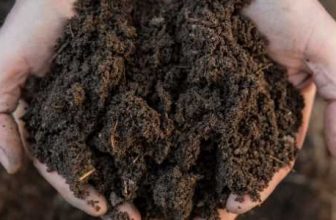Theperfectgarden.co.uk may earn a small commission (at no extra cost to the user) from Amazon and other online retailers if a purchase is made after clicking a link. I appreciate your continuing support.
Chicken wire or poultry netting, is a versatile fencing,used and available worldwide. It comes in many different forms from small holed rigid wire to large holed flexible netting. It is used for containing either animals in an area or keeping animals from an area.
Strictly speaking, chicken wire or poultry netting is a galvanised metal wire mesh which is resistant to the weather.
What Size Chicken Wire Should I Use?
Chicken wire comes in various gauges. Guages are the thickness of the wire and not the size of the hole. The higher the gauge, the thinner the wire. For example, You might see 19 gauge wire, this wire could be approximately 1mm thick. Alternatively you could see 22 Gauge wire, which could be approximately 0.7mm thick.
The mesh size (the hole size) varies from quite large at 22mm to very small at 5mm. Which size you choose, will depend on the animals you wish to keep in or out of an area. Wire mesh to keep rats and other rodents out of chicken runs for example, will need to be approximately 5mm.
The wire also comes in varying heights, usually quoted as widths. Again dependent on the size of animal, will determine the height required. Chickens of course, don’t fly as rule but can use their wings to gain height! Going from ground to perch to the roof of the coop and then over the fence in seconds!
1 metre chicken wire is the most popular width but is difficult to find. It is usually found in 0.9m or 1.2m widths. Which of course, can be cut down to the required width.
It is always recommended to have some sort of roof on a chicken run, whether that be a solid roof or one made from chicken wire. Predators, such as foxes are good climbers and will do anything to get to their prey.
Metal Wire Coatings
Wire can be coated with different products. Galvanised wire simply means it has been coated in zinc to protect the metal underneath from corrosion. It is necessary to ensure the wire underneath does not become weak and therefore ineffective. It poses no danger to your animals.
Plastic or PVC coated wire should only be used in areas where the wire is not chewed by animals. Chewing would expose the bare metal underneath the coating to weather and over time, become weak. This is likely to be the case when using chicken wire to contain poultry. Vermin will chew the wire in an attempt to get to the food.
Plastic coated/PVC wire or mesh is great for keeping dogs or cats in a garden, especially if used in a hedge. Although it can be slightly more expensive than standard chicken wire, the green coloured plastic can disappear into the background.
Best Online Chicken Wire/Poultry Netting Suppliers
- Harrod Horticulture, stock a huge selection of garden netting from fruit cage netting to flexible bird and insect mesh.
- With many free delivery options and Prime Delivery, Amazon.co.uk has a surprising array of chicken wire and even 8’x4′ mesh panels.
7 Tips When Using Chicken Wire
- Rolls of chicken wire can be unwieldy. Completely unroll the chicken wire, turn it over and roll it up again, this will remove any tendency for the wire to curl on its self.
- Use wire cutters to cut chicken wire, following the holes as you go.
- Chicken wire bends easily. When tensioning the wire, thread a broom handle or strong dowel down through the holes so that you can pull the wire evenly.
- Attach chicken wire to wooden posts using a staple gun.
- Attach chicken wire to metal posts using zip ties.
- Stop chicken wire from sagging by running a tensioned length of galvanised wire along the top and fastening with zip ties.
- Wear Gloves. Cut wire is very sharp and can damage your hands very quickly.
Using Chicken Wire in the Ground
Laying a wire mesh vertically or horizontally in the ground can be a great way to prevent animals like dogs or rabbits digging holes or trying to escape under a fence.
Dig a trench at least 10 inches deep, lay the mesh vertically in the trench and back fill with soil, pressing firmly down with your feet. It can be advantageous to dig a wide trench, allowing the chicken wire to be continued horizontally too. When the animal digs down it finds the wire mesh and gives up. This is a must when building the ultimate chicken pen or enclosure.
Tip: Foxes and other predators often start digging 18″ from the fence line. It is always good practice to extend the horizontal wire (in the ground) to this distance.
If you wish to lay mesh in grass or in a lawn to discourage animals from digging, use only a rigid mesh. Chicken wire can buckle easily and get dangerously caught in lawn mowers or in people’s feet.
The mesh can be pinned down with lengths of galvanised bent into a U shape and pushed into the ground. The grass will grow successfully around the wire, disguising it quickly in a month or two.
What else can I use Chicken Wire For?
- Protecting plants from deer
- Place over the top of plants like Yew and Buxus and mould into shapes, allowing the plant to grow through. Then trim to the frame work of the chicken wire to create different topiary shapes.
- Cut small squares of the mesh and scrunch into a ball, to act as a strainer in gutter down pipes.
- Reinforcing concrete.
- Cloches for plants. Make a dome or tunnel shape with the chicken wire and cover with frost protecting fleece. Place over tender plants
- Stretch across the top of a bucket 1/4 full of water to support cut flowers after picking.
- Cut a rectangle of the wire, then roll into a cone and line with moss. Fill with compost, then plant with bulbs or bedding to make a cone basket you can pin to a wall or post.
- Form chicken wire into a ball and fill with bulbs, hang in the shed with a piece of string to make an airy storage container.







